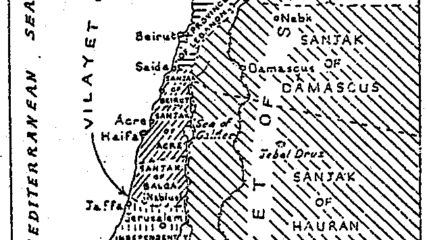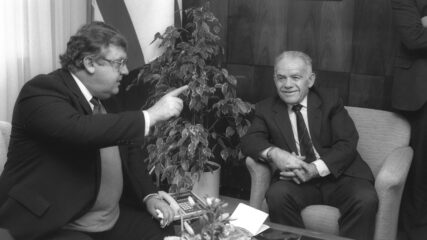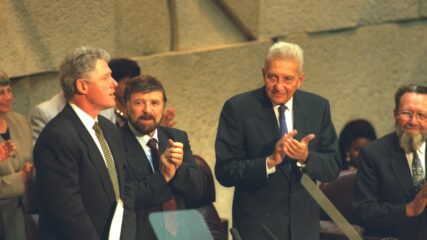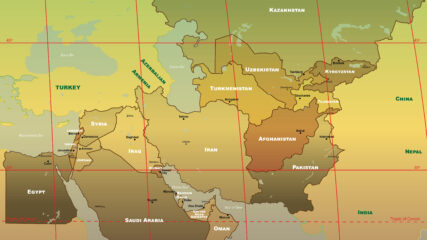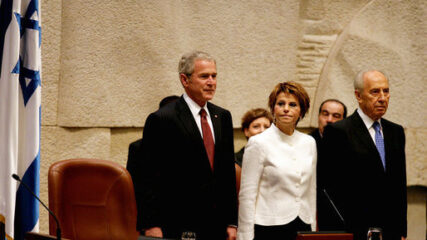By Ken Stein and Scott Abramson, March 23, 2025
Zionist/Jewish Economic Development in Palestine Before 1948
Jewish physical growth in Mandatory Palestine in the period known as the New Yishuv was sufficient through land acquired from Arabs by 1939 for the Jewish territory to constitute a state in the making. In the period immediately before the outbreak of World War II, few Jewish immigrants moved to the land.
In addition to building a broad scaffolding for the Jewish state, Jews developed a significant economic center that supported a population of some 400,000 by the eve of the war in 1939. Arab leaders in 1938 in Damascus acknowledged that a Jewish state already virtually existed in Palestine. Multiple British, American and Hebrew sources show evidence for Jewish demographic, territorial and economic growth. Ample proof is found in statistical and economic indicators revealing Jewish industrial development and capital investment, as well as the impact of Jewish immigration on Palestine’s economic growth. Jews contributed significantly to the British administration’s tax revenue in Palestine to that date and afterward, despite the restraints that the British put on the development of the Jewish national home from 1939 forward.
Land purchase and Jewish immigration were essential for economic growth. Both are explained in “Forming a Nucleus for the Jewish State, 1882-1947” and “Zionist Land Acquisition: A Core Element in Establishing Israel.” These publications describe not only the regularities in the quantities of Arab land offered to Zionists, but also their whereabouts in different parts of Palestine. Zionists were able to choose the acquisitions that met their strategic requirements, including the creation of contiguous areas and ownership of land near the headwaters of the Jordan River, along the coastal plain, on the Jerusalem-Tel Aviv road, and in Beersheba. The 1947 U.N. decision to partition Palestine into Arab and Jewish states, with an economic union between them, and to create an independent governance structure for Jerusalem reflected the outline of Jewish land acquisition stretching back to the 1880s. In the maps below, the background green area shows where Jewish villages, urban areas and rural settlements were established before the United Nations drew the map for two states. The United Nations decided on the tentative outline of the proposed Jewish and Arab states based on where the Arab population was most heavily concentrated: in the central mountains stretching from the Galilee in the north and going south along the central spine of Palestine from Tulkarem and Nablus through Ramallah and from Jerusalem through Bethlehem to Hebron and beyond. The concentration of the Jewish population stretched from Metula and Tel Hai in the north, south past the Sea of Galilee, along the Jezreel Valley to Haifa’s environs, and south along the coast to Gaza.
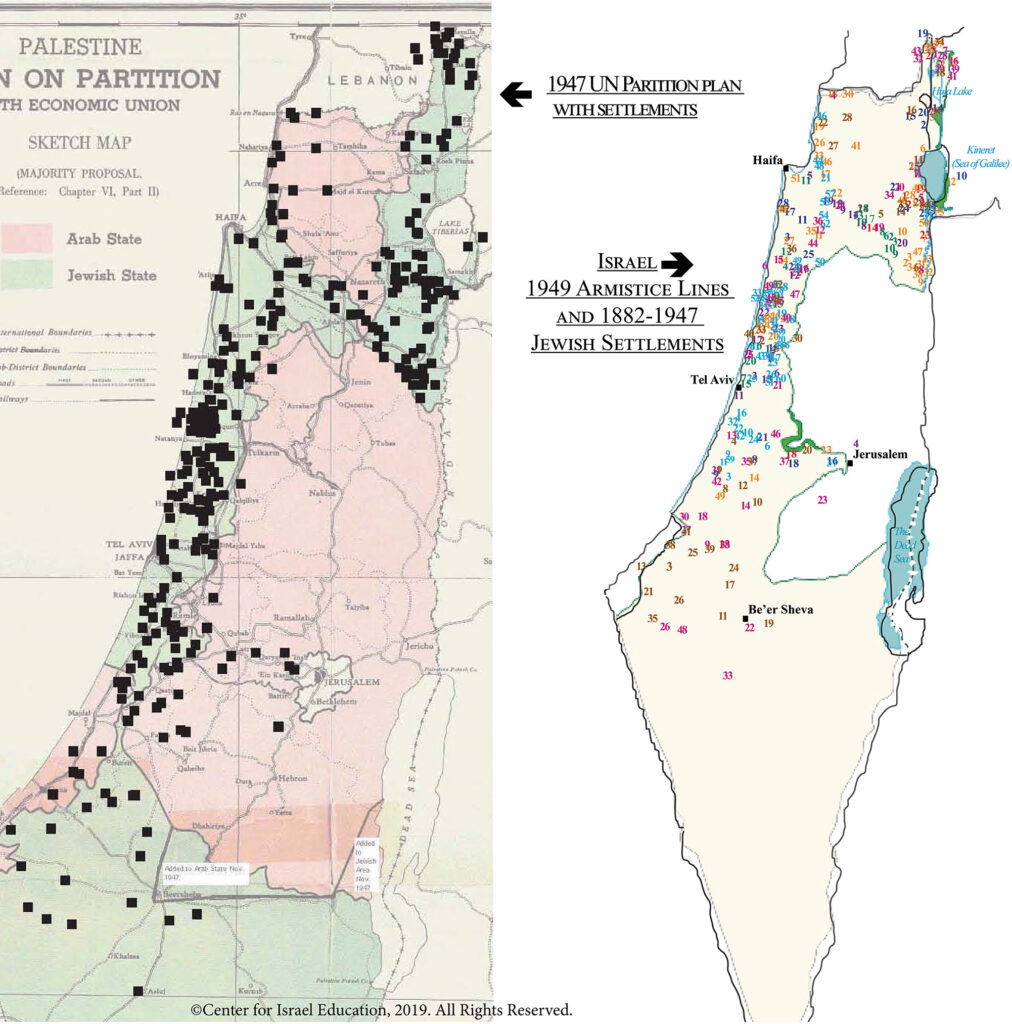
Jewish immigration to Palestine before and after World War II was vital if there was to be a Jewish state. Immigrants’ contributions to the economy, industry, education and political organization grew the infrastructures needed for a viable Jewish state, as did funds from abroad. As a historian of Zionism and Israel noted, three-quarters of the cost for sustaining the 1948-1949 war was born by Jews living in the Land of Israel.
Immigration
The preponderance of single male Jewish immigrants in the 1920s, along with their high literacy levels and ideological commitments, created a reasonably well-organized and highly motivated population that engaged in state building. These immigrants engaged in rural agricultural and industrial development and built industries in health care, education, culture, finance and banking. These industries were supported financially by the immigrants themselves, who often had to pay fees to immigrate to Palestine. Those fees went into the coffers of the British administration.
Single male immigration significantly affected the development of the state in the making. This phenomenon began after World War I with the Third Aliyah (1919-1923) and continued through the 1920s and 1930s. The preponderance of males met labor needs in agriculture, construction and industry. Immigrant men were crucial for the Zionist objective of developing state infrastructure, including preparing some areas to sustain new immigrants. Women also ameliorated land, but not to the extent of men.
Many of the young men who immigrated were committed to the Zionist cause or at least open to the dynamic of contributing to an evolving enterprise in a not-fully defined Jewish homeland. This ideological drive was central to the success of the Zionist movement. Again, women played highly significant roles in defending Jewish locations, while single men served in the emerging Jewish military organizations.
Jews in the Industrial Sector
By 1927, Jews were major participants in Palestine’s industrial sector, though Arabs owned a majority of industrial establishments. While Arabs owned two-thirds of industrial establishments, Jewish investments accounted for two-thirds of the output. The scholar Barbara J. Smith highlighted the rapid development of an industrial sector, driven by Jewish immigrants. The industrial growth she noted was largely shaped by the needs of Jewish settlers, not the Arab population. By the late 1920s, she wrote, “a modern, Western-style industrial sector had emerged, focused on consumer goods and providing employment for Jewish workers” (The Roots of Separatism in Palestine British Economic Policy, 1920-1929, Syracuse University Press, 1993, pp. 178 and 179).
By 1939, the Jewish economy dominated industrial activity, with 872 Jewish companies employing 13,678 workers and additional small businesses providing employment to 18,000 others. Jewish industries accounted for a staggering 86% of total industrial output and 79% of the workforce (Survey of Palestine, 1946). The capital invested in Jewish industries surged from 4.39 million Palestine pounds in 1939 to 12.09 million Palestine pounds by 1942 (Issa Khalaf, Politics in Palestine: Arab Factionalism and Social Disintegration, 1939-1948, State University of New York at Albany, pp. 48-49).
During the Second World War, demands for food, raw materials, and manufactured goods such as textiles and munitions for the British military effort in the Mediterranean spurred the local economy. Infrastructure needs expanded for the railroad, roads and airfields. The Haifa port had become a primary destination for Iraqi oil through a pipeline from Mosul by 1935. Increased economic activity led to higher employment, particularly in sectors tied to the military supply chain. Jewish businesses and industries expanded, especially in agriculture, manufacturing and construction. Jewish entrepreneurs took advantage of the demand to expand their investments in Palestine despite immigration restrictions and the disaster unfolding for Jews in Europe. Arab labor had fewer skills, but Arab employment and the Arab economy grew notably, though to a lesser degree. Jewish industrial output doubled during the war years. In 1945, Jewish industries produced 85% of Palestine’s output after more than 600 enterprises were founded during the war (Zionist Organization, 1946).
Capital Investment and Financial Contributions
From 1920 to 1945, Jews played a pivotal role in financing the development of Palestine. A considerable portion of the investment came from abroad, with the Zionist organization Keren Hayesod alone raising over £14.5 million by 1945, primarily from the global Jewish community (Eliezer Kaplan, “Private and Public Investment in the Jewish National Home,” in J.B. Hobman, editor, Palestine’s Economic Future: A Review of Progress and Prospects, London: Percy Lund Humphries and Co., Ltd., 1946, pp. 112-115). By the end of the Mandate, Jewish capital accounted for 60% of Palestine’s overall fixed capital formation, contributing significantly to industrial expansion. Between the world wars, Jews annually invested 39.3% of their gross national product into the economy, far exceeding the Arab sector’s 12.2% (Jacob Metzger, The Divided Economy of Mandatory Palestine, 1998). These investments fueled economic growth without relying on British taxpayer funds (Kaplan, 1946).
In 1948, during the War of Independence, Israel’s economy was bolstered by $250 million contributed from the Jewish Diaspora, yet some 75% of the war’s cost was raised domestically, demonstrating the strong financial support of Jews in Israel (Derek Penslar, “Rebels Without a Patron State: How Israel Financed the 1948 War,” in Rebecca Kobrin and Adam Teller, editors, Purchasing Power: The Economics of Modern Jewish History, Jewish Culture and Contexts, Philadelphia: University of Pennsylvania Press, 2015, pp. 186-187, 188, 191).
Actions and inactions by Arab state and Palestinian leaders affected the development of the Jewish state. Jewish land purchases put large sums of money into the hands of Arab sellers, particularly those living in Palestine, not absentee landowners, after 1931. Arabs in Palestine collaborated or engaged with Jews in multiple areas that directly aided Jewish state building, as chronicled by Hillel Cohen in Army of Shadows. Arab state leaders, primarily those in Egypt, tried in the early 1940s to raise money to prevent Jews from purchasing more land in Palestine, but the Committee for Rescuing Arab Lands in Palestine (Central Zionist Archives, S25/6554) failed to entice political or financial support.
The Arab League boycott of the Jewish economy in Mandatory Palestine and Israel proved to be the most successful and longest-lasting Arab state effort to hamper Jewish and Israeli economic life. The boycott aimed to cut off trade to the Jewish economy and pressure other states to do likewise. Established in 1945, the Arab boycott office against Israel remains active. The boycott cost Israel hundreds of millions of dollars by denying it markets in the Arab and Muslim world, primarily in agricultural, textile and industrial goods. Israel was driven to shift its export focus to Europe, North America and other parts of the world, and hard currency earnings ultimately boosted Israel’s young economy. By the 1970s, Western Europe had become Israel’s most important trade region.
Jewish Contributions to British Revenue and Potential for a Jewish State Economy
Throughout the Mandate period, the Jewish community contributed significantly to the British administration’s revenue. In 1928, despite making up just 17% of the population, Jews contributed 44% of the revenue (House of Commons Debates, 1930). By 1944-45, Jewish contributions to government revenue increased to 65%, despite Jews representing only 32% of the population (Zionist Organization, 1946). The British used 80% of the revenue collected to build roads, ports and other infrastructure to support their administrative control over Palestine. When they left in May 1948, the remaining infrastructure fell under Israeli control, yet Jewish sources had provided most of the revenues that fueled the British administration there.
By 1948, the economic nucleus necessary for the establishment of a Jewish state was in place. The Jewish economy had achieved significant industrial growth and capital investment and had a robust workforce. Despite the economic dominance of the Jewish sector, geographic separation between the Jewish and Arab communities had solidified, with Jews primarily residing along the coast and in the valleys, while Arabs inhabited the interior (Yossi Katz, Partner to Partition: The Jewish Agency’s Partition Plan in the Mandate Era, Frank Cass, 1998, p. 19). The Jewish economy had become somewhat self-sufficient, particularly in industrial production, capital investment and revenue generation, and was ready to support a Jewish state.
The development of a semi-independent economic base provided the Jewish community an economic scaffolding to transit to statehood in 1948. The Jewish Agency for Palestine, which represented the Jewish community to the British, evolved to function as an autonomous state apparatus before the state existed. Jewish self-empowerment growth under the British was relatively constant but was bounded by the British limitations on Jewish communal growth. Zionists almost always circumvented the British-set boundaries, whether buying land in restricted zones or smuggling in illegal immigrants.
The Jewish population adapted, innovated and coped with restrictions and obstacles placed in its path. Zionists developed self-defense forces, financial institutions, and an economic and industrial core, and massive volunteerism showed a collective commitment to push toward a state without any law forcing the population’s actions. Indeed, anguish from the destruction of European Jewry from 1939 to 1945 and the U.N. proposal in November 1947 to partition Palestine into Jewish and Arab states catalyzed state building that was already half a century in the making.
State’s Early Lean Years
Israel saved itself from destruction in the first Arab-Israeli war, but the survival of the newborn state was far from certain. With the threat from its neighbors, defused only until the war’s next round, Israel faced uncertainties on multiple economic fronts. It had to provide for its own oil, defend its borders, import foodstuffs, avoid insolvency in its currency, absorb hundreds of thousands of new immigrants, secure weapons for national defense and address many other urgent needs after losing 1% of its population in the independence war.
To meet its needs and ensure survival, the government undertook a great many construction projects, building infrastructure, housing, factories, power stations and much else throughout the country. The scale of the building was staggering, and the rate at which it unfolded was dizzying. In its first three years, Israel established almost 300 new communities, nearly as many as the Zionists built between the start of the First Aliyah in 1882 and independence in 1948.
To pay for this building bonanza, the revenue-deprived government resorted to deficit spending — in effect, printing money to spend money. But because increasing the money supply inevitably leads to inflation (too much money chasing too few goods), the government sought to limit consumption of those goods and instituted rationing in 1949.
Quite apart from this rationing, government interventionism made Americans and other evangelists of the free market wince. The Israeli government set the terms and interest rates of all loans, individual and corporate. It taxed citizens for international travel. It banned possession of foreign currency. But during the three years of rationing from 1949 to 1951, known as austerity (tzena in Hebrew), the government touched the everyday lives of all citizens.
In the era of austerity, Israeli citizens were given coupons for limited quantities of food and assigned to certain grocery stores where the coupons could be redeemed. Nor was only food limited. Furniture, footwear and clothing were also rationed. Israelis, as they would many times thereafter, were constrained to make do with the little they had. Ovens were a rarity, so Israeli kitchens were equipped with a makeshift alternative — the wonder pot — that would forever be the symbol of austerity. This tube pan with a vented lid was placed atop a gas burner and used as an all-purpose cooker for Israelis’ meager rations.
Although austerity was short-lived, its culinary influence endures. Rice was a luxury, so David Ben-Gurion called on the Osem food company to contrive a wheat-based substitute. Thus was born “Ben-Gurion rice,” known outside Israel as Israeli couscous. Another iconic Israeli food, falafel, owes its rise in popularity to its use as a high-protein substitute for meat when animal products were a luxury.
Rationing anywhere rarely escapes public outrage, and Israel was no exception. Running on a slogan of “Let us live!” an anti-austerity political party, the General Zionists, won the second-highest number of seats in the 1951 Knesset election. But it wasn’t only popular discontent that undermined austerity. A black market flourished throughout tzena as Israelis looked to this underground trade to supply them with goods that austerity removed from their reach.
To the relief of the public, austerity was relaxed in 1952. It still applied, albeit in limited fashion, until 1959 when Minister of Trade and Industry Pinhas Sapir took to the airwaves to proclaim a message that was music to Israeli ears: “Here comes the day we have been hoping for.” Rationing was over at last.
Estimated Dollar Value of Israel’s Exports, 1948–2025
| Year | United States | Europe | Latin America | Asia | Eastern Europe | Total Exports (including areas not shown) |
| 1948 | $20M | $5M | $1M | $1M | $1M | $28M |
| 1950 | $30M | $10M | $3M | $3M | $3M | $49M |
| 1955 | $40M | $15M | $4M | $4M | $4M | $67M |
| 1960 | $55M | $30M | $5M | $6M | $5M | $101M |
| 1965 | $70M | $60M | $8M | $8M | $7M | $153M |
| 1970 | $150M | $150M | $15M | $20M | $10M | $345M |
| 1975 | $250M | $300M | $35M | $40M | $20M | $645M |
| 1980 | $450M | $900M | $60M | $120M | $50M | $1,700M |
| 1990 | $2,400M | $3,000M | $250M | $500M | $200M | $6,350M |
| 2000 | $5,500M | $6,500M | $700M | $1,300M | $500M | $14,000M |
| 2010 | $8,000M | $10,500M | $1,200M | $3,000M | $1,000M | $23,000M |
| 2020 | $11,000M | $16,500M | $1,800M | $6,000M | $1,500M | $35,800M |
| 2025 est. | $14,000M | $20,000M | $2,500M | $8,000M | $2,000M | $50,500M |
Source: Israel’s Central Bureau of Statistics
Israel’s Economic Boom, 1953-1965
Israelis found much relief from the state’s growing pains in 1952. The “New Economic Policy” launched by the government that year not only loosened rationing, but also introduced several deflationary reforms. The printing of money was curbed, the currency was devalued to make export prices more competitive, and the Palestine pound was swapped out with a new currency, the Israeli lira. Some liberalizing measures made the centrally planned Israeli economy marginally freer.
But the stabilization and growth of the Israeli economy owed less to the New Economic Policy than to cash infusions from abroad. Until then, money had come primarily from the United States in the form of loans and grants, as well as donations and, after Israel Bonds was established in 1951, bond purchases. The reparations agreement with West Germany in 1952 was a significant financial injection. In 1953, aid from abroad from all sources contributed almost 25% of Israel’s gross domestic product, which hovered around $2 billion in the prices of the time.
Although the 1952 reparations agreement partially rescued Israel from an economic crisis, it also precipitated a social crisis. Much of the population fiercely opposed the agreement; some protesters stormed the Knesset. Menachem Begin’s criticism of German reparations was as notable as it was acrid. But as the acrimony over reparations subsided, the economy boomed, fueled by annual infusions of German capital beginning in 1953. All manner of projects were launched as Israelis “built the new homeland, like wild hornets in crazed swarms,” as Yehuda Amichai put it. Economic growth reflected this surge of activity. For the next 12 years, Israel averaged 10% annual growth while keeping inflation in the single digits. For part of this period, Israel even boasted the world’s fastest-growing economy. The lean years of the state’s infancy had given way to fat years.
The Israeli building frenzy continued into the 1960s. The port of Ashdod, built on the open sea, was inaugurated and became the country’s second-busiest port. The nuclear reactor in Dimona was brought online. But no infrastructure project required as much expense and labor as the National Water Carrier. At a cost of almost 5% of GDP, the National Water Carrier was originally intended to channel water from the Kinneret/Sea of Galilee to irrigate the Negev, but it morphed into an elaborate water grid that integrates all of Israel’s water works. Completed in 1964, the National Water Carrier stands as a monument to Israel’s successes in hydraulic engineering and water management.
In the mid-1960s, around the time the massive public works projects were winding up, the almost 14-year disbursement of German reparations came to an end, and population growth dropped off. The government of Levi Eshkol pursued a policy of mitun (“restraint”), under which state-sponsored projects were paused or delayed and taxes were raised. Enacted in 1964, these policies were especially ill-timed: Compounded by the completion of the reparation payouts and the construction projects, they plunged the country into a recession in 1966.
But then came the Six-Day War in June 1967 and, with it, the reversal of this economic downturn. Still, while runaway growth returned to the Israeli economy, the prewar recession wasn’t so much ended as postponed. The reckoning would come after the Yom Kippur War in 1973. But in the interval between the wars, amid the euphoria that swept the nation, few Israelis could see the black clouds gathering on the horizon. By every indication, all was well. Population growth accelerated, and highly skilled immigrants from Poland, the Soviet Union, South Africa and even the United States made aliyah. Capital inflow came not only from the wealth of these immigrants, but also from unprecedented levels of foreign investment.
Meanwhile, after Israel lost France as its foremost arms supplier in 1967, its military-industrial growth surged as the Jewish state turned inward and devoted its energies to a native defense industry. Israel’s territorial gains in the war also had a significant effect on its economy as Palestinians found employment as low-wage laborers and Israel found opportunities for construction of military installations and infrastructure throughout the territories.
The numbers alone tell the story of Israel’s postwar boom. In 1968, the Israeli economy grew 15%, and it averaged 11% annual growth until 1973. Economic attitudes shifted as Israel underwent “embourgeoisement” — the elevation of a population into the middle class and the adoption of middle-class values. In these years of bounty, the appeal of socialism waned, much to the regret of those who clung to the old collectivist ways. No less distressing to the socialist old guard was the rise of consumerism and, with it, American-style individualism.
The Lost Decade, 1974-1985
But if the Six-Day War grew the Israeli economy, the Yom Kippur War wrecked it. Even before the war, the false alarm in April and May 1973 that convinced the government that war was imminent brought about a call-up of the reserves, dealing a crushing blow to the economy. But the ill effects of this mobilization were nothing compared with the economic devastation wrought by the war itself. Numbers vary, but the cost of the war is generally estimated between $8 billion and $9 billion.
The economic fallout from the Yom Kippur War was enduring. In Israeli economic history, the period from 1974 to 1985 is known as the lost decade, characterized by sluggish economic growth and hyperinflation. Unemployment, inflation, foreign debt and the balance-of-payments deficit soared while economic growth, foreign currency reserves and the standard of living declined. Israel lost export markets after nearly every country in Africa, under Arab pressure, severed relations with Jerusalem. The global oil shock under an Arab embargo, which raised oil prices fourfold in 1974 alone, was acutely felt in Israel. Israel’s oil woes only grew worse after the September 1975 Egyptian-Israel Disengagement Agreement returned Sinai oil fields to Egypt. Royal Iran picked up the slack, supplying Israel with 70% of its oil needs thereafter, but Israel now had a much higher oil import bill. The flow of Iranian oil, moreover, would stop altogether in 1979 with the establishment of the Islamic Republic.
A rare bright spot in an otherwise dark time was Israel’s first free-trade agreement, which it concluded with the European Community (predecessor of the European Union) in 1975. Under this landmark agreement, duties on goods of Israeli origin and manufacture were abolished in EC countries.
The election of Likud’s Menachem Begin in 1977 and the ouster of the Labor Party took Israel in a different direction economically no less than politically, but different did not mean better. Begin was no free marketeer. Like his mentor, Ze’ev Jabotinsky, he believed in a robust welfare state. Thus, under his stewardship, welfare spending and the size of government increased. That said, Begin did appoint finance ministers, Simcha Ehrlich most notably, who sought to liberalize the economy. Foreign currency restrictions were repealed, and a floating exchange rate was instituted, among other laissez-faire measures. But for Begin’s liberalizing policy to succeed, he also needed to cut government spending substantially, privatize government assets and reduce a public sector that employed almost 30% of the country’s labor force. This he wouldn’t do.
Consequently, Begin’s economic policies miscarried, leaving the Israeli economy in such a state that Moshe Dayan remarked, “The world already sees Israel as an economic cadaver.”
For his part, the celebrated Jewish American economist Milton Friedman looked at the Israeli economy and quipped that the State of Israel exploded many stereotypes about Jews, including the one that held that Jews were “good economic managers.” Inflation soared to record heights, climbing to 450% by the middle of the 1980s. The value of the lira plunged, Israel’s foreign debt per capita was the highest in the world, and the Israeli stock market crashed.
Back From the Brink and Economic Liberalization
In 1985, as Israel’s economic fortunes were sinking to their lowest ebb, the national unity government headed by Shimon Peres tackled the crisis head on. In a marathon 24-hour Cabinet meeting in June 1985, Peres and his ministers formulated the parameters of what would be called the Economic Stabilization Program. The far-reaching plan aimed to redress the balance of payments and reduce inflation. Sweeping budget cuts totaling $750 million were instituted. Subsidies for basic commodities and appropriations for specific ministries were slashed. The currency was devalued, and the shekel, introduced as a replacement for the lira in 1980, was supplanted by the new Israeli shekel. The exchange rate, wages and prices were frozen. A law imposing monetary discipline was enacted to prevent such inflation as had occasioned the crisis in the first place.
The Peres government’s basket of emergency regulations saved the day, and by year’s end inflation plummeted from 450% to 20%. Relief also came from the United States, which provided $1.5 billion in aid weeks before the fateful Cabinet meeting that launched the Economic Stabilization Program. The Israeli economy received a further boost from the trade agreement signed with Washington that year.
The Economic Stabilization Program also set in motion the process by which the Israel became a full-fledged market economy and turned its back on the centrally planned economy of the 1950s. A campaign of large-scale privatization of government assets began and even affected some of the most iconic pre-state socialist institutions, including kibbutzim, moshavim and the Histadrut labor union. The mid-1980s proved to be a turning point as Israel charted a new economic course that set it on a path to prosperity.
As the 1980s wore into the 1990s, the Israeli economy grew, and deregulation and the liberalization of foreign trade and capital markets proceeded apace. Further economic stimulus came from the immigration of highly skilled, well-educated Jews from the collapsing Soviet Union. The fall of the Soviet Union was a boon for Israel in other respects. Israel established relations with dozens of countries, the former Soviet republics, India and China among them, and so gained access to new export markets. With the launch of the Israeli-Palestinian peace process, the Arab League relaxed its decades-old economic boycott of the Jewish state. Meanwhile, technology emerged in the 1990s as Israel’s leading industry, making it the “Start-Up Nation,” thanks to the proliferation of knowledge-intensive high-tech firms.
India is an example of the many states with pro-Palestinian policies that opened up to Israeli goods after the signing of the 1993 Oslo Accords, whereby the PLO and Israel recognized each other. In 1992 Israel’s trade with India was estimated at $200 million; by 1995, that trade was $1 billion. By 2024, that bilateral trade topped $7 billion.
Yet the late 1990s also brought an economic downturn, caused by ill-conceived deflationary policies. Israel didn’t relapse into the economic straits of the first half of the 1980s, but growth slowed to less than 3% annually, which, in light of the immigration-generated population explosion, is more accurately viewed as stagnation rather than growth. Two events in 2000 exacerbated Israel’s economic malaise: the dot-com bust and the outbreak of the Second Intifada.
The Israeli economy began to rebound in 2003, and soon became one of the world’s fastest-growing economies. It expanded by more than a quarter until the global recession of 2008. As finance minister, Benjamin Netanyahu launched his Economic Recovery Plan, which called for considerable retrenchment in government spending and considerable privatization of state assets. On the one hand, Netanyahu’s reforms produced steady growth and lowered government deficits. On the other hand, income inequality widened, and poverty increased.
For the most part, Israel escaped the ill effects of the 2008 global recession. Since then, the Jewish state’s economic fortunes have risen, with its per capita income growing by more than half. Other blessings have come by way of Israel’s discovery in 2009 and 2010 of vast natural gas reserves offshore. Whereas 60% of Israel’s electricity had, until then, been generated by coal, today 70% is fueled by natural gas. What’s more, Israel is now a natural gas exporter. Also, Israel was invited in 2010 to join the prestigious Organization for Economic Co-operation and Development (OECD), a kind of exclusive club for high-income democracies.
Today, Israel boasts the world’s 26th-largest economy, and on the eve of the global pandemic, its unemployment rate fell to a record-low 3.4%. But the war Hamas unleashed October 7, 2023, has devastated the economy, as discussed in a CIE webinar. With hundreds of thousands of Israelis mobilized for active military duty and 100,000 fewer foreign workers in Israel, a large swath of the labor force has been out of commission. Foreign investment has plummeted because of the reluctance of investors to plow capital into a war zone, and tourism has dropped off, with major airlines suspending flights to Israel. The three major American credit-rating agencies — Standard & Poor’s, Moody’s and Fitch — have downgraded Israel, raising its cost to borrow money. Rocket attacks have curtailed industrial and agricultural production in the north and the Gaza envelope, and Houthi attacks almost bankrupted the Port of Eilat. In January 2025, inflation on an annualized basis rose to 3.8%, the highest since September 2023. The economy has been bolstered, however, by foreign aid channeled into military expenditures. Finally, Israel’s per capita income has increased more than fiftyfold from $1,000 in 1948 to more than $55,000 in 2024. Israel’s GDP has grown from $1.3 billion at the end of 1948 to more than $500 billion in 2024, driven by industrialization, a highly educated workforce, innovation and integration into the global economy. In 1948, Israel spent 30% to 40% of its national budget on defense; in 2024, it devoted 15% to 20% of the national budget to defense. In 2024, Israel ranked 30th to 35th globally in GDP, close to Belgium and Argentina, and 20th to 25th in per capita income, close to South Korea, the United Kingdom and Japan.

